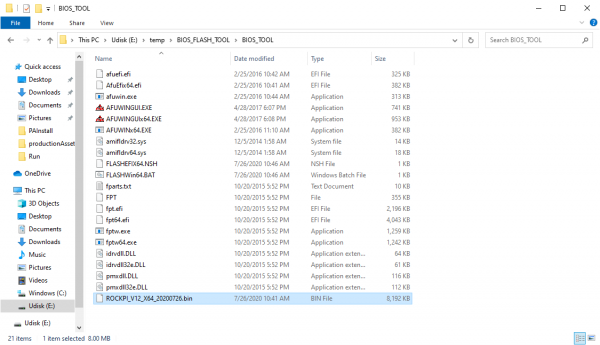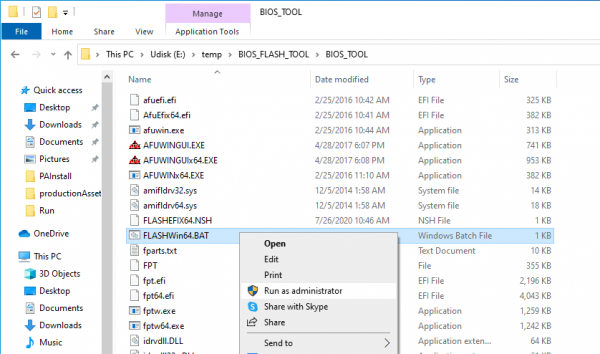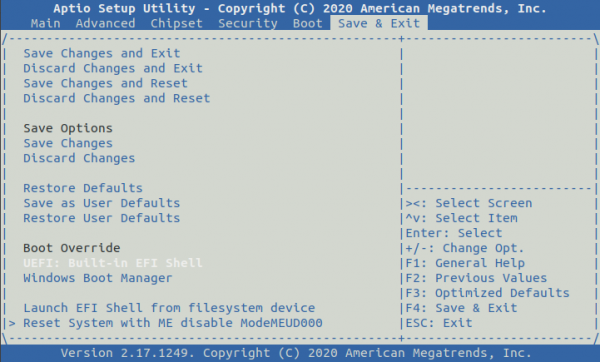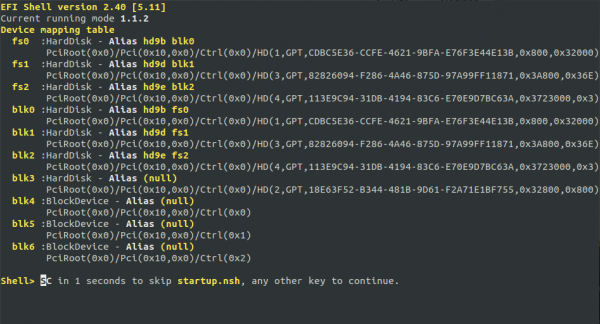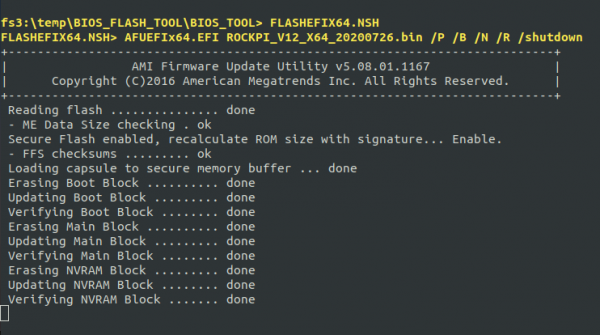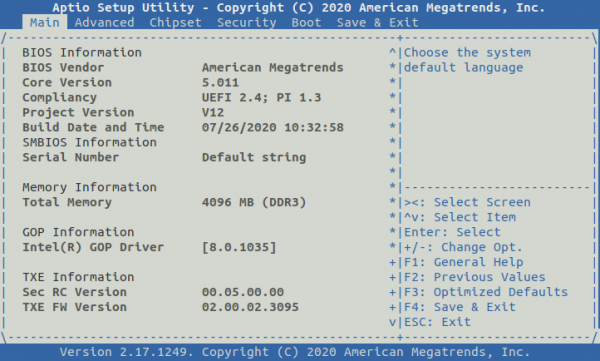Difference between revisions of "RockpiX/bios/update"
(→Prepare) |
|||
| Line 18: | Line 18: | ||
* Download the BIOS Flash Tool. [https://dl.radxa.com/rockpix/tools/BIOS_FLASH_TOOL.zip BIOS_FLASH_TOOL.zip]. | * Download the BIOS Flash Tool. [https://dl.radxa.com/rockpix/tools/BIOS_FLASH_TOOL.zip BIOS_FLASH_TOOL.zip]. | ||
| − | * Unzip the downloaded Bios Flash Tool to the root directory of the USB drive. Note: the BIOS Flash Tool already contains a current version of BIOS binary. | + | * Unzip the downloaded Bios Flash Tool to the root directory of the USB drive('''fat32'''). Note: the BIOS Flash Tool already contains a current version of BIOS binary. |
* Download the latest BIOS Image from [[rockpiX/downloads | Download]] section. | * Download the latest BIOS Image from [[rockpiX/downloads | Download]] section. | ||
| − | * Unzip the downloaded BIOS image('''.bin''' file), and copy it to the '''BIOS_FLASH_TOOL''' directory of the USB drive. | + | * Unzip the downloaded BIOS image('''.bin''' file), and copy it to the '''BIOS_FLASH_TOOL''' directory of the USB drive('''fat32'''). |
[[File:Bios_update_in_win10_2.PNG | 600px]] | [[File:Bios_update_in_win10_2.PNG | 600px]] | ||
Revision as of 09:51, 23 December 2020
ROCK Pi X > BIOS > Update BIOS
Contents
[hide]This page describe how to update the BIOS on ROCK Pi X. First of all, a working BIOS must be flashed to ROCK Pi X's SPI Flash to perform the update. The BIOS update can be done under Windows OS or UEFI shell.
Requirements
- A USB disk
- Working ROCK Pi X
Prepare
Before using the update tool to update, we need to complete the following tasks:
- Download the BIOS Flash Tool. BIOS_FLASH_TOOL.zip.
- Unzip the downloaded Bios Flash Tool to the root directory of the USB drive(fat32). Note: the BIOS Flash Tool already contains a current version of BIOS binary.
- Download the latest BIOS Image from Download section.
- Unzip the downloaded BIOS image(.bin file), and copy it to the BIOS_FLASH_TOOL directory of the USB drive(fat32).
- Edit the script file, FLASHWin64.BAT for Windows, FLASHEFIX64.NSH for UEFI Shell, change ROCKPI_V12_X64_20200726.bin to the BIOS image you downloaded.
- FLASHWin64.BAT:
@echo off if "%~d0"=="" goto DIR_CHANGED %~d0 cd %~dp0 :DIR_CHANGED AFUWINx64.EXE ROCKPI_V12_X64_20200726.bin /P /B /N /R /shutdown
- FLASHEFIX64.NSH:
AFUEFIx64.EFI ROCKPI_V12_X64_20200726.bin /P /B /N /R /shutdown
The following will separately explain how to update the BIOS using the update tool in Windows and UEFI shell.
Option1: Windows
1. Power on ROCK Pi X
2. After entering the system, plug in the U disk, right click to run the update tool with administrator privileges. PATH: BIOS_FLASH_TOOL\FLASHWin64.BAT
ROCK Pi X will restart automatically after the update is complete. update complete
Option 2: UEFI shell
1. Plugs in the keyboard to ROCK Pi X and power on, keep pressing the del button on the keyboard until it enters the BIOS.
2. After entering the BIOS, use the left and right arrow keys to switch to the "Save & Exit" interface, and then use the up and down arrow keys to select UEFI SHELL and hit enter to enter.
3. The interface after entering UEFI SHELL is as follows:
4. When you first enter the UEFI shell interface, it will output the drive letter of the storage device on ROCK Pi X to the uefi shell interface, enter the corresponding drive letter, and you will be able to access the storage device. Now you can try to enter disk alias + colon":" to change path to disk, such as this "fs0:"
Note: whenever the command line reaches the bottom, you need to enter "cls" to clear the screen, otherwise it will be difficult to see the commands you enter in the messy interface.
Shell> cls Shell> fs0: fs0:\> fs0:\> ls
5. After entering the drive letter where the update tool is located, follow below to run the update tool
# The drive letter of my U disk is fs3 fs3:\> cd BIOS_FLASH_TOOL fs3:\BIOS_FLASH_TOOL> FLASHEFIX64.NSH
The device will shutdown after the flashing completes.
Verify BIOS version
1. Power on ROCK Pi X, keep pressing the del button on the keyboard until it enters the BIOS.
2. After entering the BIOS, use the left and right arrow keys to switch to the "Main" interface.
Check the version of "Build Data and Time".

